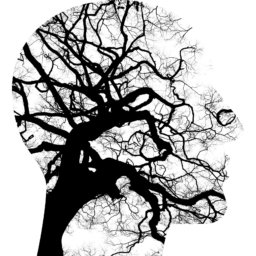Assisted Dying is a battleground, taking over our TV screens and newspapers year after year. It is a topic that brings strong opinions, both personal and professional, and lies at the heart of the belief that we are free, autonomous beings with a will of our own.
This debate took a further turn in 2006 when the floor was opened up for the mentally ill. A 53 year-old gentleman who had been diagnosed with manic depression sought a prescription for sodium pentobarbital to end his life. He claimed his right of self-determination under Article 8 of the European Convention on Human Rights and was supported by Dignitas, a Zurich-based advocacy group. The response from the Swiss high court was to uphold the right of those suffering from ‘incurable, permanent, severe psychological disorders’ to end their lives (8).
My reasons for writing about such a powerful topic came after watching a video that followed a 27 year-old girl called Sanne. Having suffered with Depression, Insomnia and Borderline Personality Disorder for almost a decade, she came to the conclusion that she wanted to end her life through a planned death. The video follows her and her father as they deal with the impact of such a harboring choice. The video brings this heavy discussion from the table and into the house of someone treading through this very battle.
“Finally I didn’t have to prepare for the worst whenever my phone rang.”
- Sanne’s father (1)
The idea of providing assisted suicide for those suffering from psychological problems reminds us that there are people living in our society who have suffered from chronic mental health problems for years at a time, having undergone numerous treatments with little change and have weighed the decision of their death with a rational and competent mind. As the plaintiff in the Swiss high court argued, “We are entering an era during which psychiatric patients do not need to be protected, but empowered” (7).
The issue of euthanasia for the mentally ill makes this emotive topic even more of a tightrope. We urge ourselves to treat physical and mental illnesses alike. We claim it is a sign of stigma when we do not. Interestingly, the Dutch Association of Psychiatrists has maintained that psychiatric suicide should be treated no differently from assisted suicide in medicine generally (9).
If a person makes such a decision with his or her mind intact, who are we to disagree? If we offer the choice to someone with a physical illness, why shouldn’t we offer it to the mentally ill? As Sanne says, “I’m the one who will have to live with my life.’ (1)

Who are we to judge people’s actions based on our brief fifteen-minute glimpses during our consultations? We do not live with them day in and day out. We do not sit with them upon the sofa as their mind squirms and bolsters, trying to tear apart its loves and dreams until what is left is a shell of self-loathing, despair and disgust. One argument is the fact that suffering from mental disorders can be just as distressing as suffering from the physical illness that can lead people towards assisted suicide. The argument follows that if a person is able to make a decision autonomously, with a clear understanding of both the nature of the decision and its consequences, then their choice should be taken into consideration3.
Assisted suicide for psychiatric disorders is legal in Europe in only Belgium, Luxembourg and the Netherlands, (4) where the patient is needs to fit the criteria to have an unbearable and untreatable psychiatric disorder. One study in Belgium found that out of a sample of 100 patients seeking assisted suicide for psychological problems, the majority of patients (8) suffered from a treatment-resistant mood disorder. Both patients and relatives reported that they found euthanasia to be more humane than suicide, with a less difficult period of mourning (4). There has been much controversy over the dramatic increase in the number of people who have chosen euthanasia due to a mental illness within the Netherlands over the past few years, rising from just 2 people in 2010 to 56 people in 2015 (5).
One clear difficulty from this comes from the subjective terms of ‘untreatable’ and ‘unbearable.’ Can we ever be certain that a mental illness is untreatable? Many people who go through acute crisis get better, and are often relieved that they did not succeed in killing themselves in the first place (4). Indeed, the term unbearable can be described as even more subjective; what is bearable for myself may be torture for someone else.
Yet we must also admit that despite the advances that Psychiatry has made in the last century there are people who do not respond to medications and can find such interventions to be intrusive. Furthermore, quality of life studies have shown that serious mental illnesses lead to impairments across social relationships, occupations and physical and cognitive functioning; reflecting upon our own lives, how different would we be if these things were taken away from us? It has further been argued that a clinicians’ view of quality of life can often be very different from their patients, with a greater focus on the illness and absence symptoms in comparison to a patients’ perspective of a standard of living. Some patients have described their experience of chronic mental illness as a rollercoaster of repeated relapses, psychiatric surveillance, unwanted interventions and the associated stigma (8).
Watching the video, I was struck by Sanne’s awareness of the impact such a decision would have on those closest to her. Often we are taught that one of the first sentences we should say to someone who is suicidal is ‘How do you think your family would feel?’ The thoughts that are reflected from such a question can bring someone back from the depths of utter darkness. Sanne’s words illustrate the amount of time she must have spent upon this very question:
‘”I’m facing a few hours of pain, but they’ll have to live with it forever.”
- Sanne(1)
I imagine such a way forward makes many people feel uncomfortable. It certainly did for me. If we allow this and make it the ‘norm,’ then what is the direction we head towards? That the cure for mental illness lies down the track of euthanasia? That suicide is ‘right’? Is that what this means – that we advocate suicide for the mentally ill? These are all very difficult questions. But however we choose to answer, we must remember that somewhere out there, there is a person who lives everyday as if it were hell; whose very presence within this world brings with it feelings of despair and hopelessness that many of us can never hope to experience. Let us remember that whatever judgments we pass are made from a mind that may well be light years away from the ones that are struggling through this very darkness.
Sanne ended her life on 24th March 2014. She informed her family and friends in advance to save them the trauma that often comes form an unexpected suicide; a method known as self-euthanasia.
Everyone will have his or her own personal views on this topic. It is a discussion that unleashes a lot of emotions. The aim is to let go of your own conclusion and place yourself within the mind of someone like Sanne.
The full video can be found here:
https://aeon.co/videos/what-it-s-like-to-stand-by-your-daughter-in-her-choice-to-die
Below is another documentary following a 24-year old woman, Emily:
References
- Aeon. What it’s like to stand by your doctor in her choice to die; 2016 [accessed: 28th May 2016]. Available from: https://aeon.co/videos/what-it-s-like-to-stand-by-your-daughter-in-her-choice-to-die
- Wise, J. Netherlands, first country to legalize euthanasia. World Health Organization Bulletin; 2001. 79:580
- Varelius, J. On the Moral Acceptability of Physician-Assisted Dying for Non-Autonomous Psychiatric Patients. Bioethics; 2015. 30:227-233
- Thienpont, L., Verhofstadt, M., Loon, T.V., Distelmans, W., Audenaert, K., Deyn, P.P.D. Euthanasia requests, procedures and outcomes for 100 Belfian patients suffering from psychiatric disorders: a retrospective, descriptive study. BMJ; 2015. 5:e007454
- The Telegraph. Netherlands sees sharp increase in people choosing euthanasia due to ‘mental health problems.; 2016 [accessed: 28th May 2016]. Available from: http://www.telegraph.co.uk/news/2016/05/11/netherlands-sees-sharp-increase-in-people-choosing-euthanasia-du/
- Medscape. Euthanasia for ‘Untreatable’ Mental Illness: New Data; 2016 [accessed: 28th May 2016]. Available at: http://www.medscape.com/viewarticle/858786
- Appel, J.M. A Suicide Right for the Mentally Ill? A Swiss Case Opens a New Debate. Hastings Center Report; 2007. 37:21-23
- Hewitt, J. Why are people with mental illness excluded from the rational suicide debate? International Journal of Law and Psychiatry; 2013. 36:358-365
- Parker, M. Defending the indefensible? Psychiatry, assisted suicide and human freedom. International Journal of Law and Psychiatry; 2013. 36:485-497
- Aviv, R. The Death Treatment: When should people with a non-terminal illness be helped to die? The New Yorker; 2015 [accessed: 29th May 2016]. Available from: http://www.newyorker.com/magazine/2015/06/22/the-death-treatment














